About Bird Banding
at the
Powdermill Avian Research Center
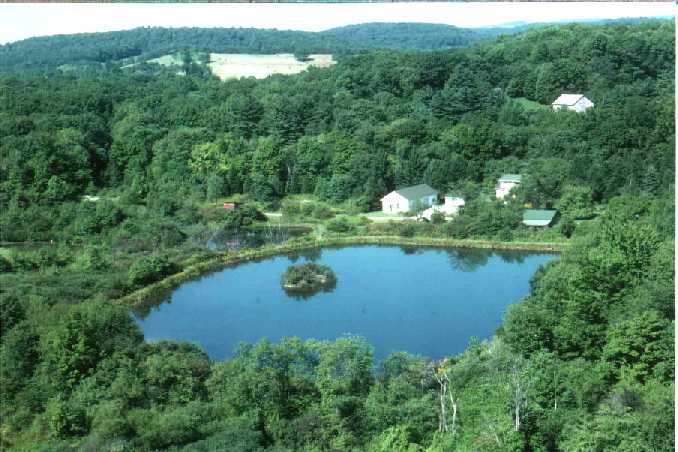 Powdermill
Nature Reserve is the field biological station
of Carnegie Museum of Natural History,
one of the four Carnegie Museums of Pittsburgh. The station was established
in 1956 through the vision and leadership of then Director of CMNH, Dr.
M. Graham Netting. The Reserve itself now comprises nearly 2,200
acres and is dominated by mature second growth forest with some early and
late successional old fields, numerous streams, and a few small constructed
ponds and wetlands. The Reserve
is located in the Laurel Highlands region of southwestern Pennsylvania.
Powdermill
Nature Reserve is the field biological station
of Carnegie Museum of Natural History,
one of the four Carnegie Museums of Pittsburgh. The station was established
in 1956 through the vision and leadership of then Director of CMNH, Dr.
M. Graham Netting. The Reserve itself now comprises nearly 2,200
acres and is dominated by mature second growth forest with some early and
late successional old fields, numerous streams, and a few small constructed
ponds and wetlands. The Reserve
is located in the Laurel Highlands region of southwestern Pennsylvania.
.
One
of the first permanent research projects begun at Powdermill was a landbird
banding program initiated in the summer of 1961 by Robert
C. Leberman, who semi-retired in 2004, after 43 years as the program's
Senior Bird Bander. Bob
Mulvihill joined the program in 1978 as a volunteer college student
and was hired full-time in 1983. He currently serves as Field
Ornithology Projects Coordinator for the Powdermill Avian Research Center.
Adrienne Leppold similarly began as a volunteer college student in 2000
and took over as Bander-in-Charge in 2004, a position that was made full-time
in 2006. Powdermill's program may well be the longest running, year
round professional banding operation in the country.
.....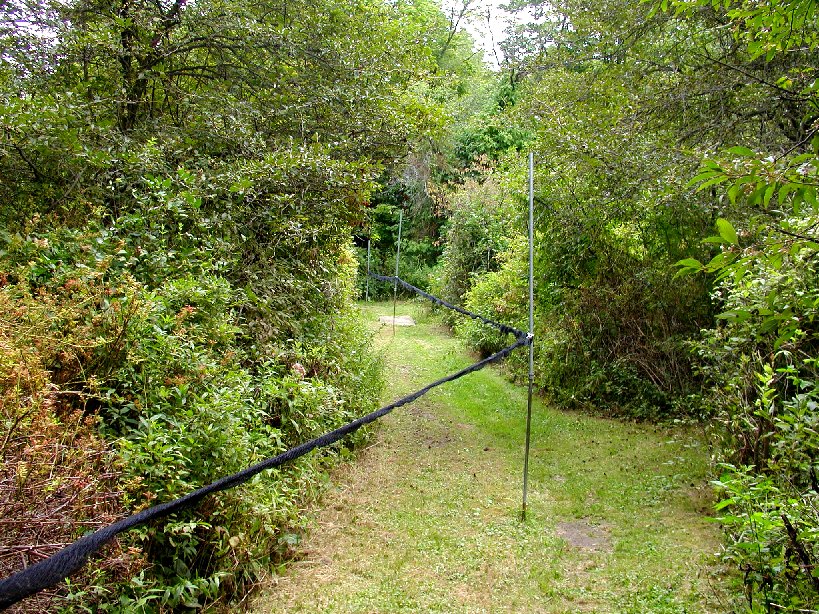
.
.
The
banding station is situated in a 10-hectare area of old fields, hedgerows,
marshy ponds, and alder- and willow-lined streams, bounded by extensive
intact mixed deciduous forest along Laurel Ridge to the east and low intensity
agricultural areas in the Ligonier Valley to the west. The
program utilizes up to 70 12-meter long mist nets placed singly or in series
of up to eight connected nets in hedgerow gaps and along habitat edges,
mostly where the adjacent vegetation is not much higher than the nets themselves.
When fully opened, the nets are about 2.5 meters high. The locations
for most of the mists nets used in the Powdermill banding program have
changed little over the course of 45 years. To maintain the efficiency
of the net locations for catching birds, habitat management is done, as
needed, to remove tall woody vegetation from the vicinity of some net lanes.
Recently, active habitat management has also been done to clear overgrown
brush away from the pond banks and stream edges to open up the wetland
areas for more aerial foraging songbirds and to attract more wading birds.
..
.
.
.
..
.
.
From April through November,
mist nets are opened before dawn each banding day (during the winter months
banding operations are scaled back and, on most days, plastic coated wire
Potter traps baited with seed are used).
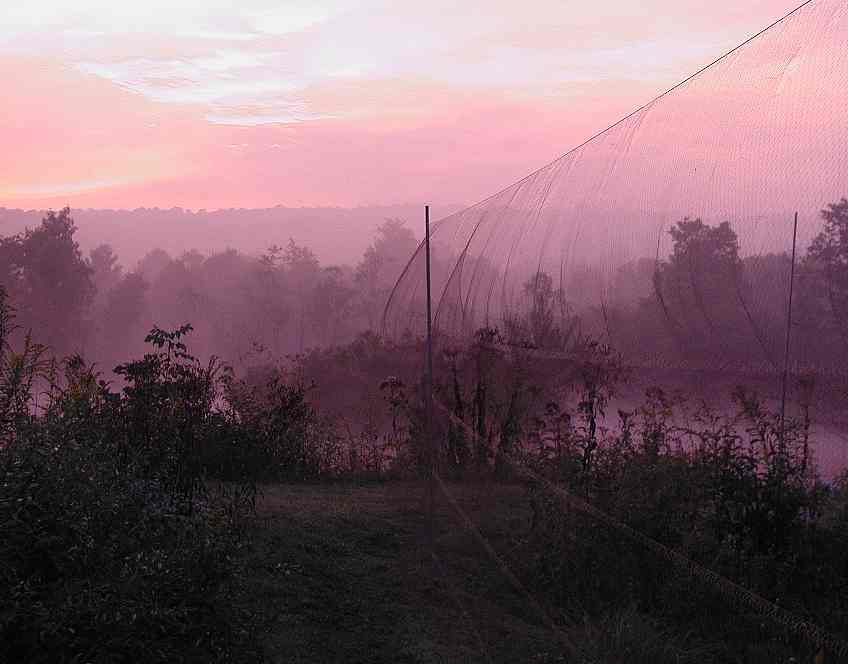
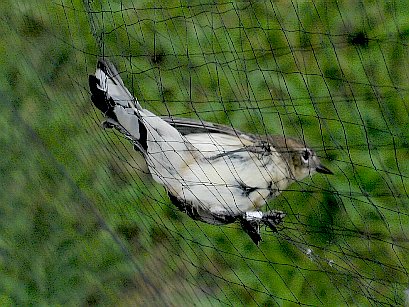
..
Captured birds are carefully
removed from the nets every 30-40 minutes (depending upon conditions),
placed in paper bags, and returned back to the banding lab for processing.
.
.
Once in the lab, birds are
identified to species, banded (or reprocessed if they had been banded previously),
and information about their age, sex, wing length, fat deposits, and body
mass is recorded. The whole process of collecting data for each captured
bird takes less than a minute, after which the bird is promptly released
through a small sliding door in the window next to the banding desk.
.
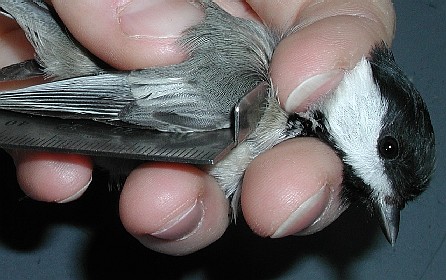
.
..
..
.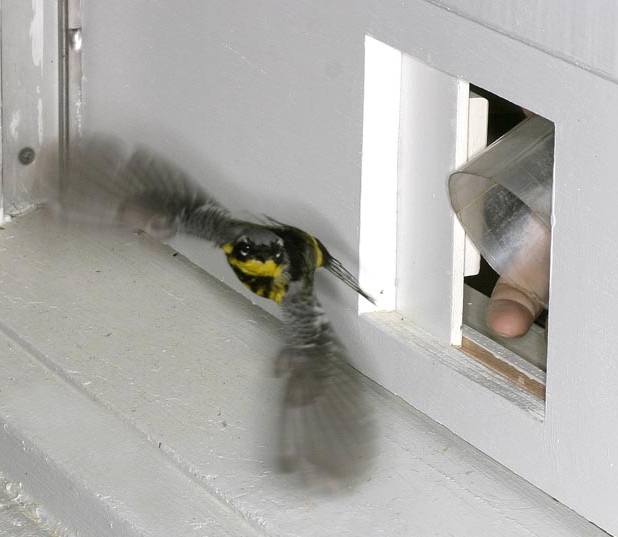
..
.
.
.
.
...
.
.
..
.
Additional
information often is collected at Powdermill as part of other ongoing research
projects, including bioacoustical
studies and a photographic
guide book project. Studies of molt in birds is of particular
interest at Powdermill, so detailed notes regarding the pattern, timing,
and sequence of molt is also often recorded.
The
Powdermill
Banding Station Protocol can be referenced for more detail regarding
banding procedures and operations.
.
.
...
Since it began full-time
operation in 1962, the program has generated banding records at a rate
of nearly 13,000 birds per year, with recaptures, on average, making up
20 percent of the annual total number of birds caught. As of the
end of the year 2005, the program's database included records from just
under 460,000 original bandings and over 110,000 recaptures, all of which
represent 190 species. Our records are submitted regularly to the
Bird
Banding Laboratory, which maintains the bird-banding database for all
of North America.
<HOME>

 Powdermill
Nature Reserve is the field biological station
of Carnegie Museum of Natural History,
one of the four Carnegie Museums of Pittsburgh. The station was established
in 1956 through the vision and leadership of then Director of CMNH, Dr.
M. Graham Netting. The Reserve itself now comprises nearly 2,200
acres and is dominated by mature second growth forest with some early and
late successional old fields, numerous streams, and a few small constructed
ponds and wetlands. The Reserve
is located in the Laurel Highlands region of southwestern Pennsylvania.
Powdermill
Nature Reserve is the field biological station
of Carnegie Museum of Natural History,
one of the four Carnegie Museums of Pittsburgh. The station was established
in 1956 through the vision and leadership of then Director of CMNH, Dr.
M. Graham Netting. The Reserve itself now comprises nearly 2,200
acres and is dominated by mature second growth forest with some early and
late successional old fields, numerous streams, and a few small constructed
ponds and wetlands. The Reserve
is located in the Laurel Highlands region of southwestern Pennsylvania.



